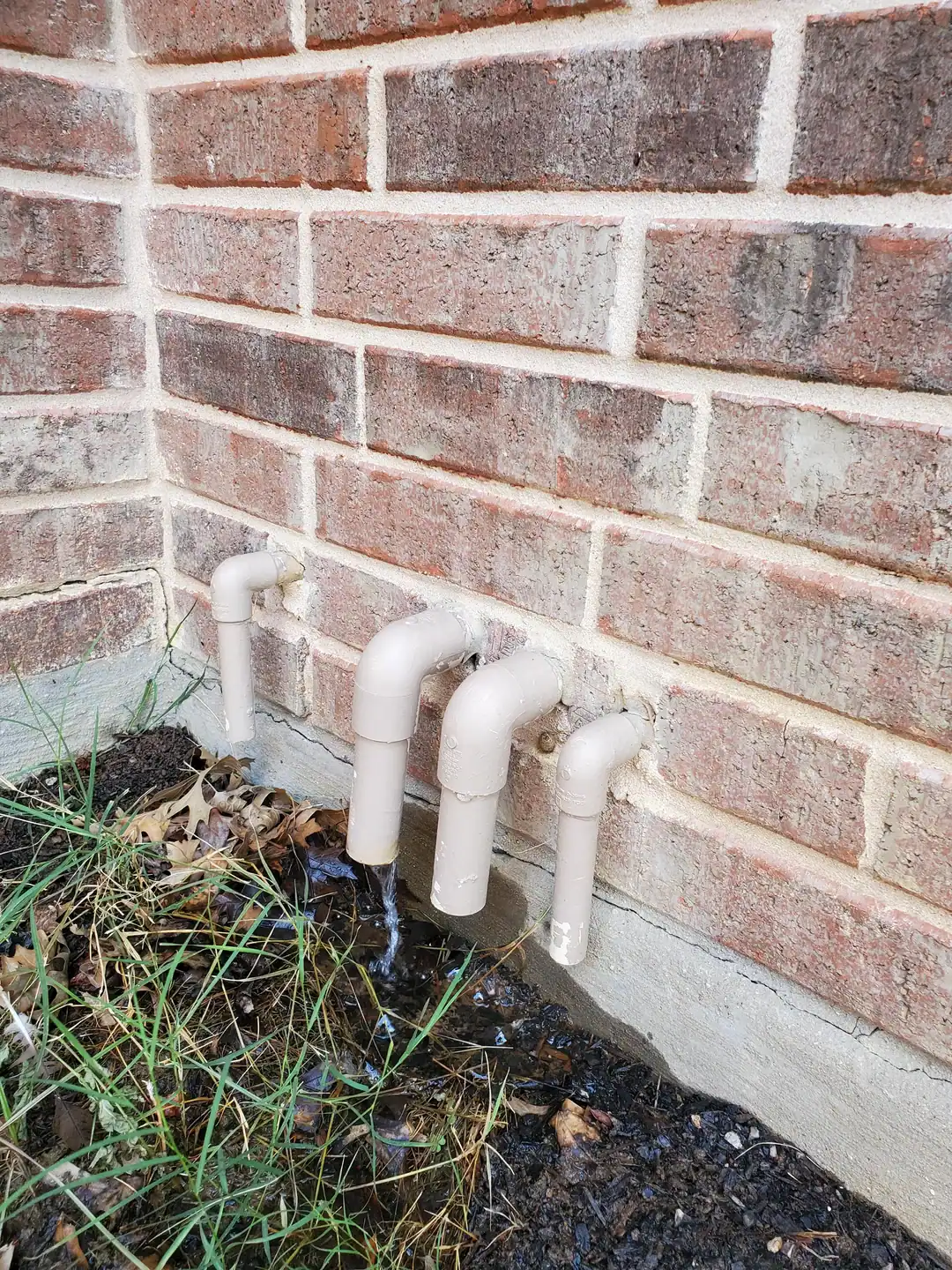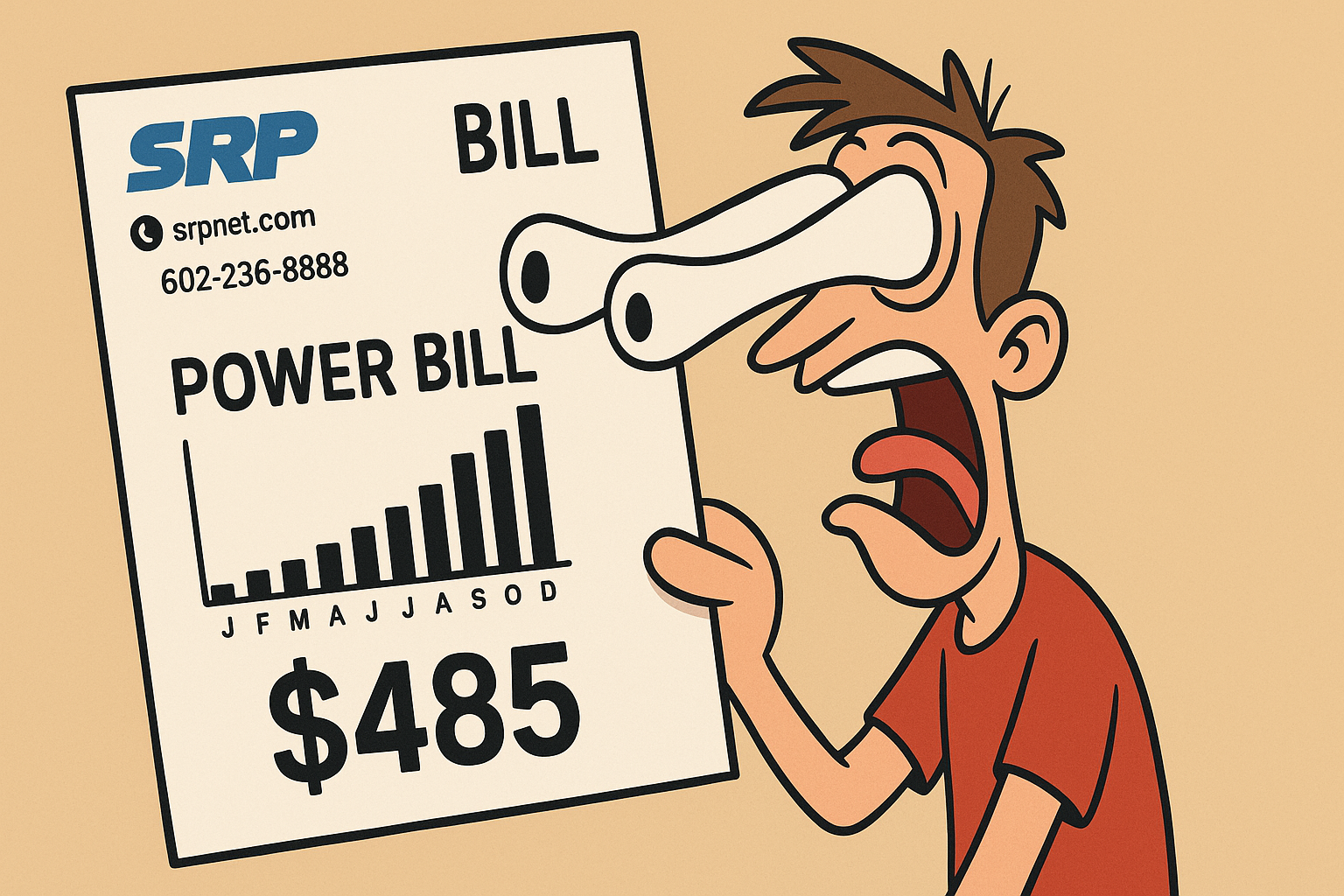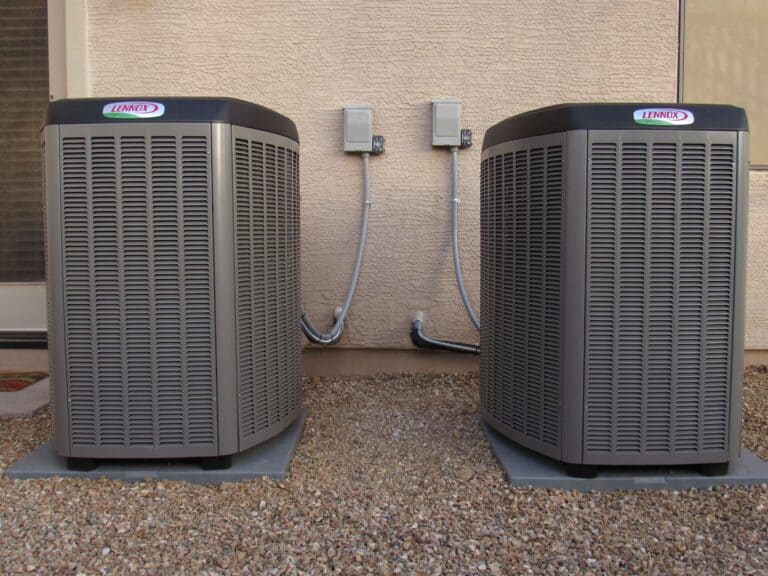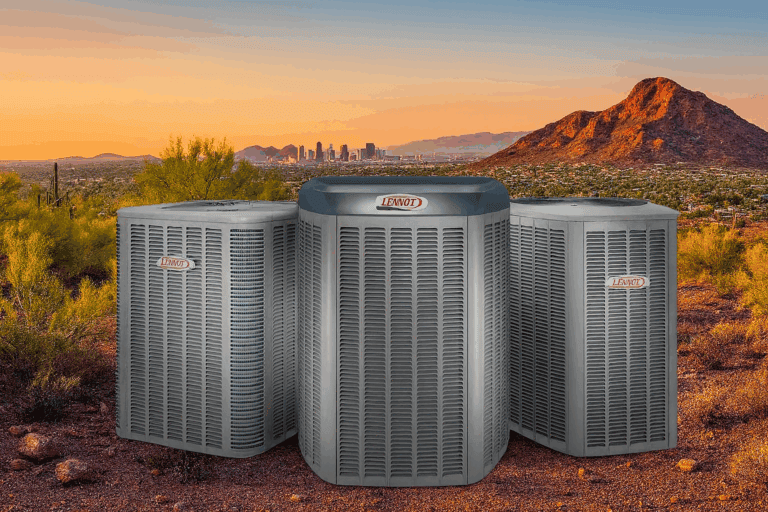Water Leaking from a Pipe on the Side of the House – What You Need to Know
TL;DR (Too Long, Didn’t Read) Quick Summary
Noticed water dripping from a pipe outside your house? Wondering if you need a plumber or an HVAC tech? Here’s the short version:
- 🟢 Low PVC pipe near your foundation dripping? Totally normal—your AC is doing its job.
- 🔴 Higher PVC pipe near the roof dripping? That’s an emergency overflow line—your main AC drain is clogged.
- 🟠 Copper pipe leaking? Likely your water heater’s pressure relief valve—may need a plumber.
- ⚠️ Rust stains or overflow? Call for service—it’s most likely AC coil or drain pan corrosion and needs quick attention.
- 💧 Emergency drain switch? A small device that can save you thousands—especially if your air handler is in the attic.
- 📅 Been over a year since your AC tune-up? It’s time for drain line cleaning.
Ready for a deeper dive? Keep reading …
“Should I Call a Plumber or an Air Conditioning Company?”
As the owner of an air conditioning company serving Mesa, Gilbert, Chandler, and the greater Phoenix area, I get this question all the time.
If you spot water leaking from a pipe outside your house, there are usually two quick things to check:
- Where is the pipe located?
- What material is it made of?
Answering those usually tells you whether it’s a normal function—or something that needs immediate attention.
Common Pipes That Leak Water Outside a Home
| Pipe Type | Material | Location | What It Usually Means |
|---|---|---|---|
| AC condensate drain line | PVC | Low (near foundation) | Normal (if lower pipe), clogged if upper pipe |
| Water heater PRV drain line | Copper | Mid/high wall | Pressure relief—could be urgent |
1. AC Drain Line Leaking? Here’s What It Means
If the water’s coming from a white PVC pipe, you’re most likely looking at your air conditioner’s condensate drain.
- ✅ Low pipe near foundation dripping? Good news—your system is doing its job.
- 🚨 Higher pipe near roofline dripping? That’s the emergency overflow—your main drain is clogged and needs service ASAP.
2. Understanding Your Central AC System Setup
Most Phoenix-area homes have central air systems with:
- An outdoor condenser (the unit with the fan and compressor)
- An indoor air handler or furnace / coil combo, usually in the attic or garage
Inside that indoor unit is your evaporator coil, where moisture collects and is drained outside through a PVC pipe.
3. What Type of Drain Line Do You Have?
If You Have a Horizontal Air Handler (Usually in the Attic):
- You’ll see two PVC pipes outside:
- Lower pipe = primary drain (normal to see water)
- Higher pipe = emergency overflow (not normal—clog alert)
If You Have a Vertical Air Handler (Garage, Closet, or Mechanical Room):
- You’ll typically only see one PVC pipe
- No emergency overflow line means no backup
- Regular maintenance is critical to prevent damage
4. Why That Overflow Pipe Matters
That upper pipe is connected to a shallow emergency drain pan beneath your air handler. It’s a backup—but it won’t hold much.
If it overflows (or rusts through over a season of unnoticed dripping), you could be looking at:
- Ceiling collapse
- Ruined drywall
- Soaked insulation
- Mold growth
🛠️ Protect Your Home with an Emergency Drain Switch
We’ve seen firsthand what kind of damage a clogged AC drain line can cause—and it’s why we include an emergency drain switch with every new system we install.
What’s an Emergency Drain Switch?
An emergency drain switch (also called a float switch or safety cutoff switch) is a small but mighty device installed near your indoor unit.
Its job?
Shut down your AC system immediately if it senses a clogged drain or water backing up into the overflow pan.
This prevents further damage and alerts you to the issue before things get out of control.
Why It’s So Important—Especially in Arizona Attics
In most homes around Mesa, Chandler, and Gilbert, the air handler is in the attic—right above everything you don’t want water dripping onto.
We’ve seen:
- 🌊 Ruined hardwood floors
- 🛋️ Damaged furniture and cabinetry
- 🎹 And in one heartbreaking case: a baby grand piano passed down through two generations—destroyed when a clogged drain overflowed into the living room while the homeowner was on vacation.
How It Works (And Why You’ll Know Right Away)
The second the switch detects trouble, it kills power to your AC.
And since we live in the Phoenix area… trust me, you’ll notice immediately when your AC stops working.
Better a hot house for a couple hours than thousands in repairs.
We Know What Works Best in the Valley
Not every drain switch is created equal. The right type depends on:
- System configuration (horizontal vs. vertical)
- Location (attic, closet, garage)
- Whether you have a secondary pan
After 28+ years and thousands of installations in the East Valley, we know which models hold up best (and take action the fastest) in Arizona’s brutal monsoons and dust storms.
🧰 It’s a small investment for a big layer of protection!
5. Rust Stains on the Wall or WalkWay? Don’t Ignore Them
If you see orange or brown streaks under a pipe—especially the upper one:
- You could be dealing with a long-term slow leak
- Possibly from a rusted-out evaporator coil or drain pan
- Even if it’s dry now, it will overflow again, especially during monsoon
Call for a quick inspection before minor staining turns into ceiling damage.
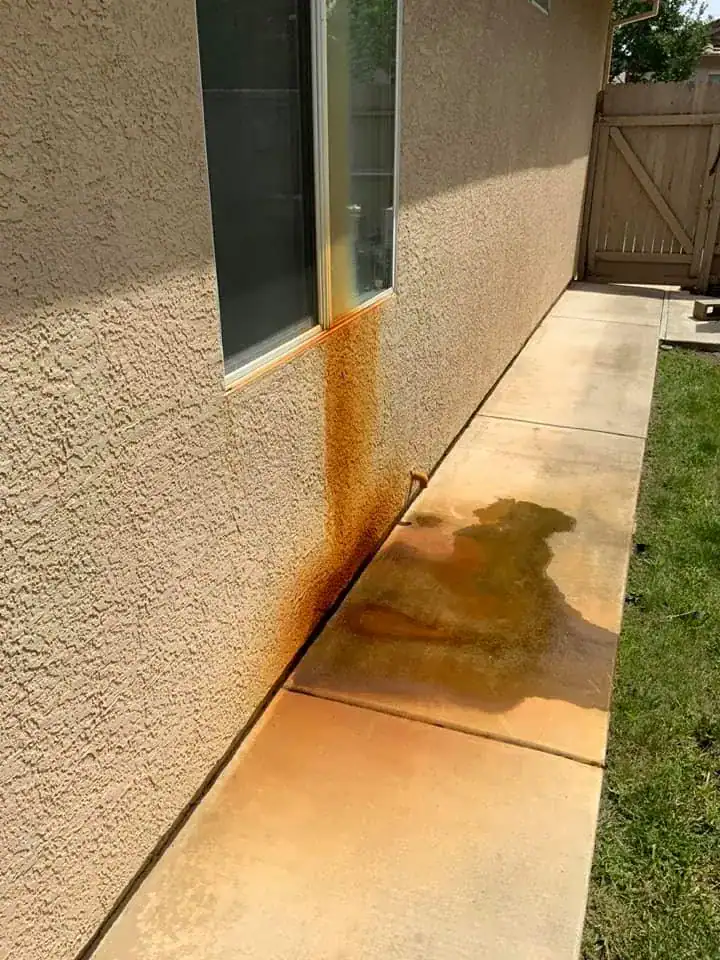
6. Water Leaking from a Copper Pipe? Not Your AC
If the leak is from a copper elbow or straight copper pipe, it’s likely your water heater’s pressure relief valve (PRV).
This is a safety feature that opens to relieve pressure inside the tank. By code, it’s plumbed to drain outside your home.
What to Do:
- ⏳ Slow drip? Try lightly tapping the valve to reseat it. Watch it closely.
- 🚿 Gushing water?
- Turn off the water supply to the tank.
- Call a licensed plumber right away.
🧼 How Often Should AC Drain Lines Be Flushed?
Most manufacturers recommend a twice-a-year inspection, but as far as flushing the line, we suggest doing it once per year—right before cooling season.
Here’s what we do in our Mesa shop (and in my own home):
| Maintenance Task | Recommended Timing |
|---|---|
| Blow out the drain line with nitrogen | Spring (pre-cooling season) |
| Flush with clean water | Spring |
| Full inspection & tune-up | Spring + Fall |
What Comes Out?
You don’t want to know—but I’ll tell you anyway:
- Sludge
- Rust
- Mold
- Insects / Spiders
- Mud wasps
- Lizards
- Even toads (true story)
This stuff builds up fast, especially in our dry desert climate with dusty monsoons.
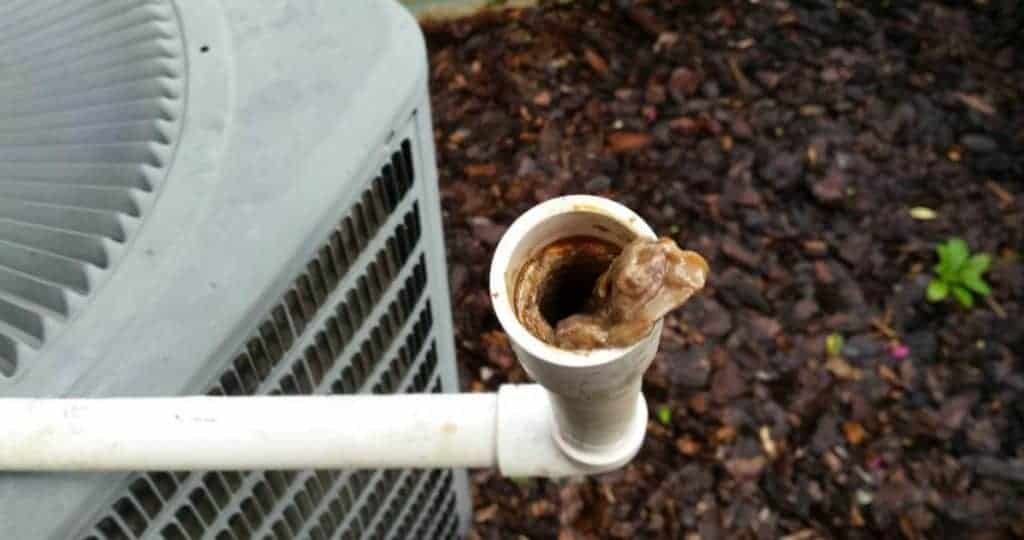
When Is It Normal to See Water Dripping?
Seeing water dripping from the lower PVC drain line near your foundation?
That’s normal, especially when:
- Humidity is high (hello, monsoon season!)
- Your system is running nonstop
- The primary drain line is working as it should
🟡 If you see water and rust stains, it’s time for a closer look.
💰 Mesa Monsoon Special
Get $50 OFF Drain Line Cleaning or Emergency Drain Switch Installation
Mention this article when you call or book online!
📞 CALL US NOW!
🖱️ Schedule Online Now
🛠 Proudly serving Mesa, Chandler, Gilbert, Tempe & the Phoenix East Valley since 1997
🧯 Final Tip from a Local HVAC Pro
“Still not sure if you need an AC tech or a plumber? Just call us first. We’ll figure it out, and make sure you get the right fix. After nearly three decades of keeping homes cool and dry in Mesa—we’ve seen it all.”

